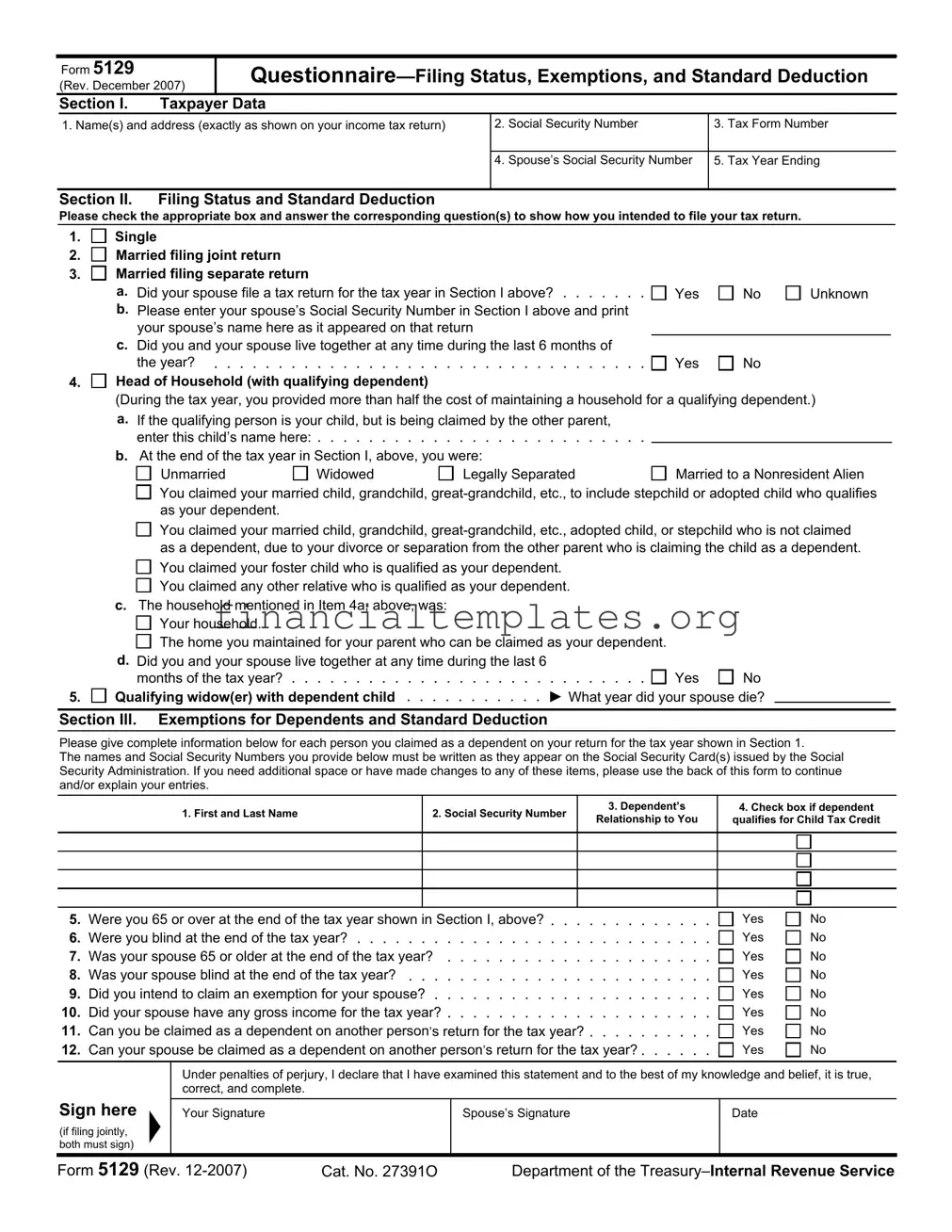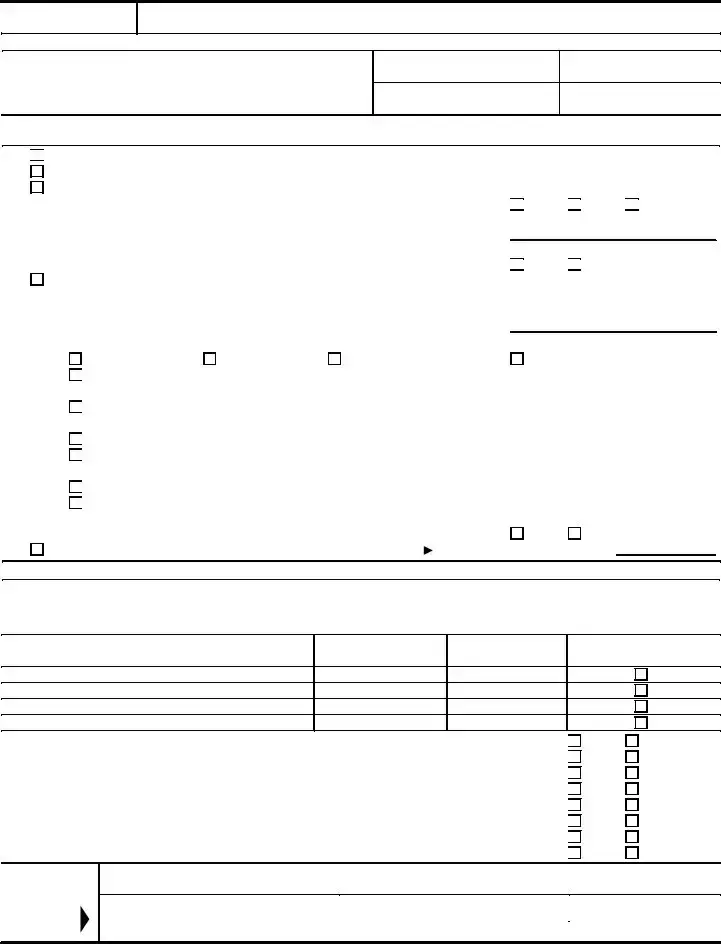Navigating tax forms can often feel like trying to understand a foreign language, but taking the time to get familiar with forms like the IRS 5129 can make a significant difference in how efficiently and accurately one files taxes. The IRS 5129 form, revised in December 2007, serves as a comprehensive questionnaire designed to guide individuals through the intricacies of filing status, exemptions, and deductions. Its first section collects basic taxpayer data, including names, addresses, and Social Security numbers, ensuring that all information aligns with what is on the income tax return. Moving forward, the form delves into the specifics of filing status—whether single, married (filing jointly or separately), head of household, or qualifying widow(er) with dependent child—requiring taxpayers to answer detailed questions about their living situation, their spouse’s tax filings, and whether they lived with their spouse during the last six months of the tax year. It not only asks about the taxpayer's dependent children but also extends to other relatives who might qualify as dependents, underscoring the importance of understanding who in your family unit can affect your tax status and potential deductions. Moreover, the form addresses age and disability-related considerations, asking about blindness and age over 65, which can influence the standard deduction amount. Completing the IRS 5129 form with meticulous attention to detail is crucial for taxpayers aiming to maximize their deductions and accurately report their filing status, leading to a smoother tax filing experience.





 Single
Single




 Yes
Yes 


 No
No 


 Unknown
Unknown
 Yes
Yes 


 No
No
 You claimed your married child, grandchild,
You claimed your married child, grandchild, 
 You claimed your married child, grandchild,
You claimed your married child, grandchild, 
 You claimed your foster child who is qualified as your dependent.
You claimed your foster child who is qualified as your dependent. 
 You claimed any other relative who is qualified as your dependent.
You claimed any other relative who is qualified as your dependent.
 Your household.
Your household.
 The home you maintained for your parent who can be claimed as your dependent.
The home you maintained for your parent who can be claimed as your dependent.














